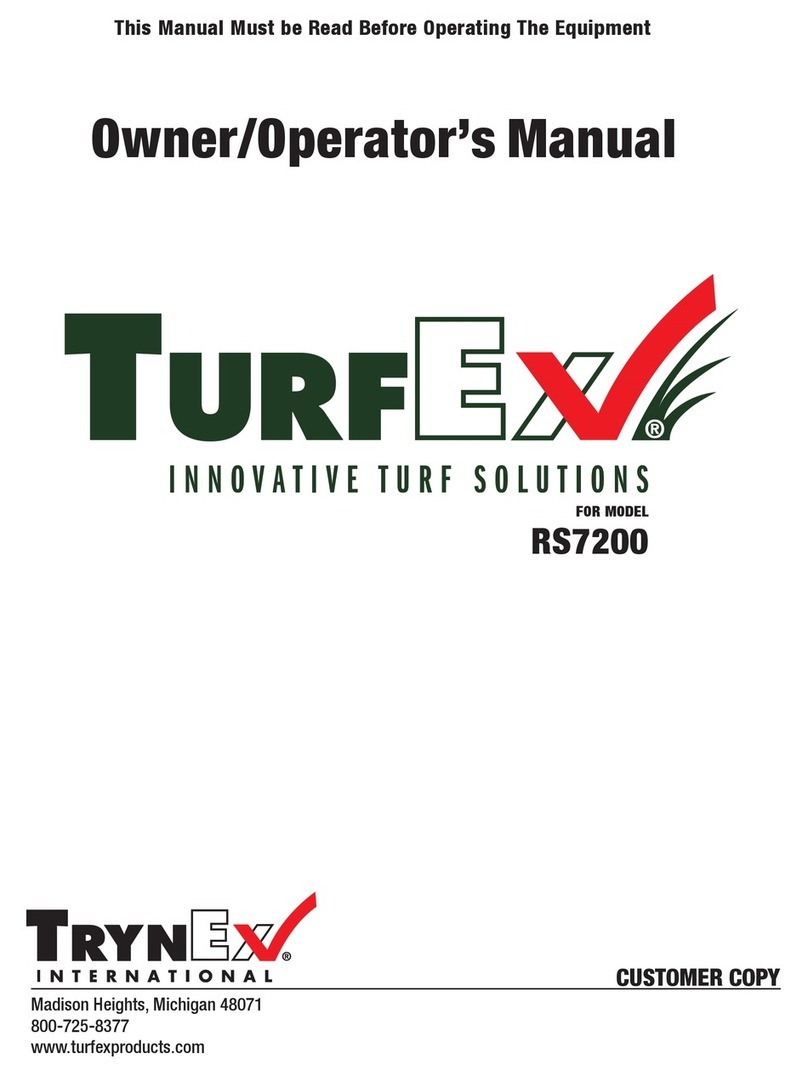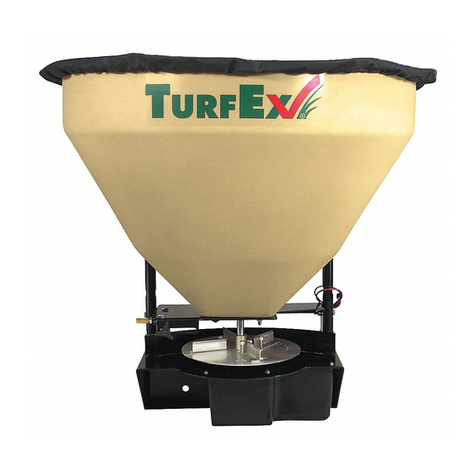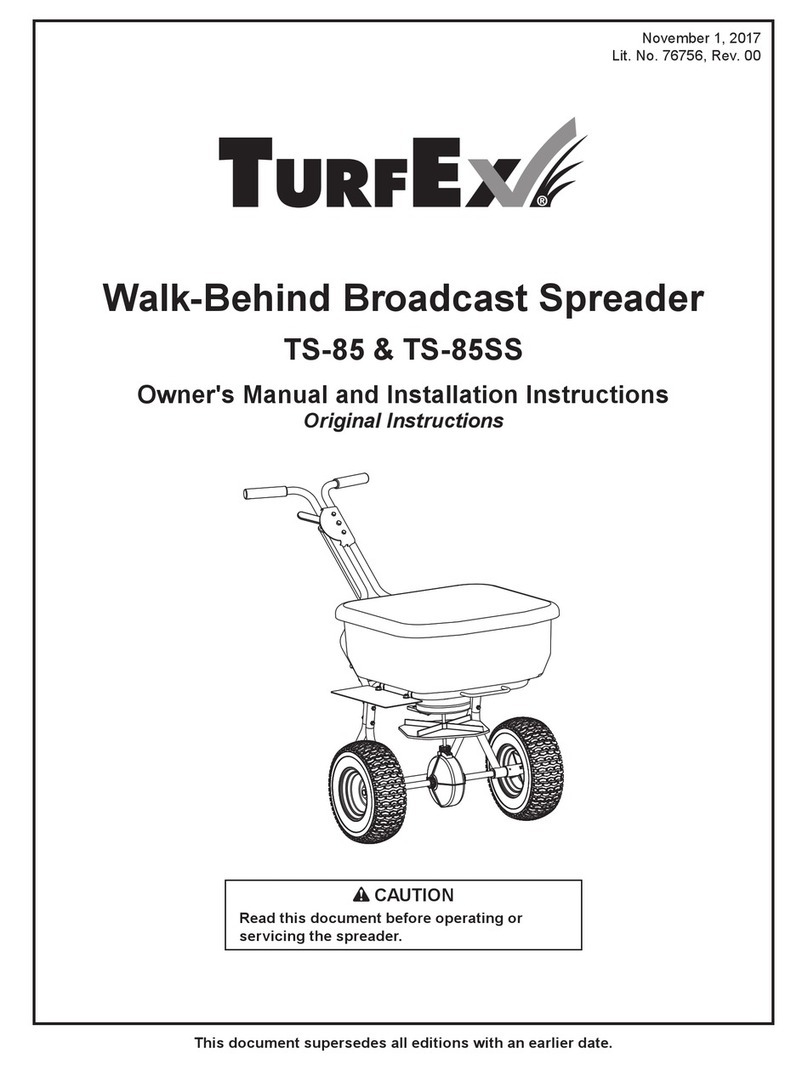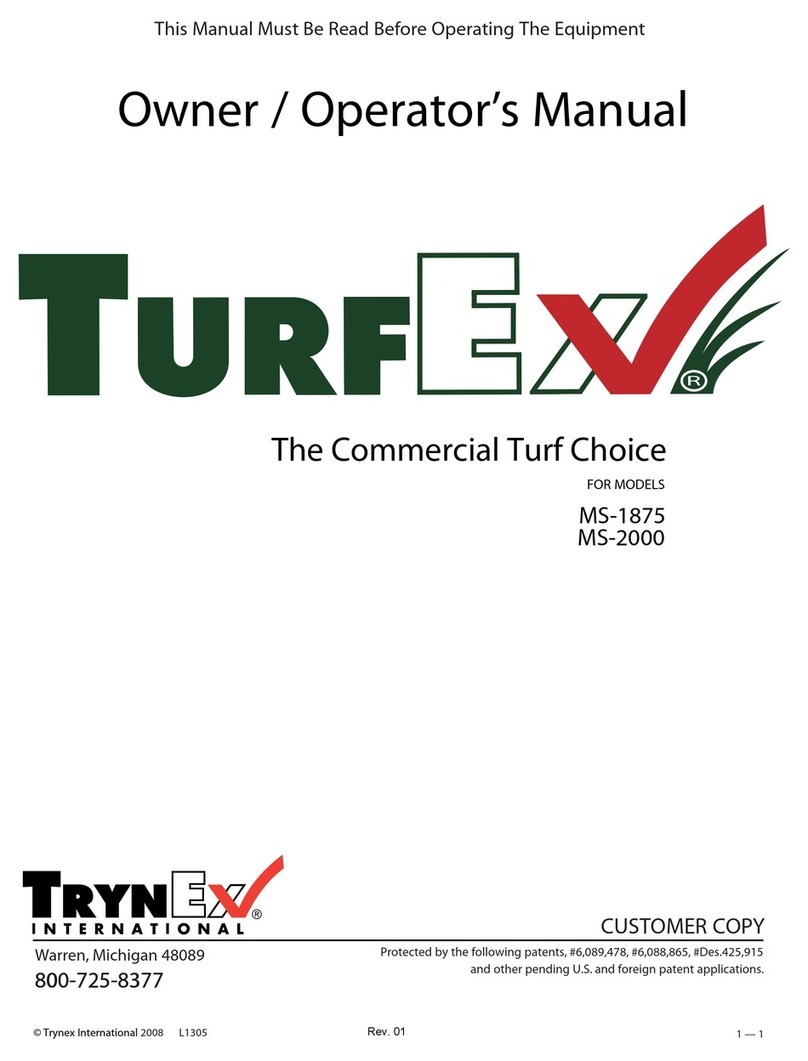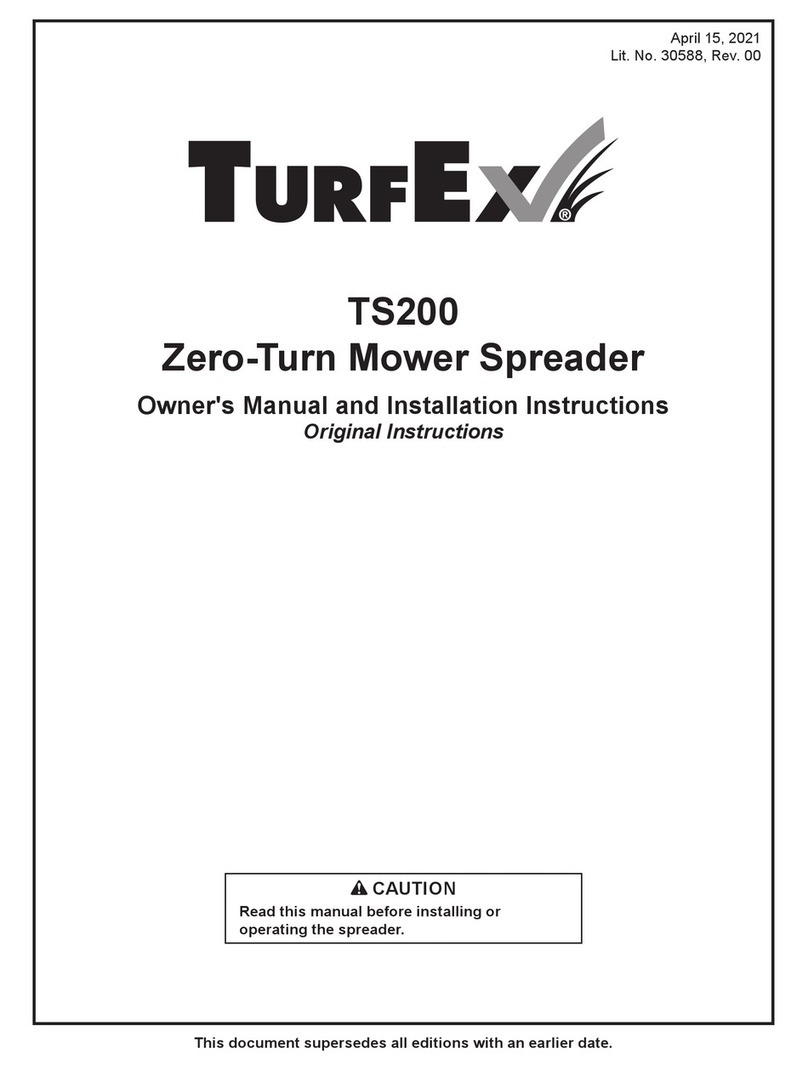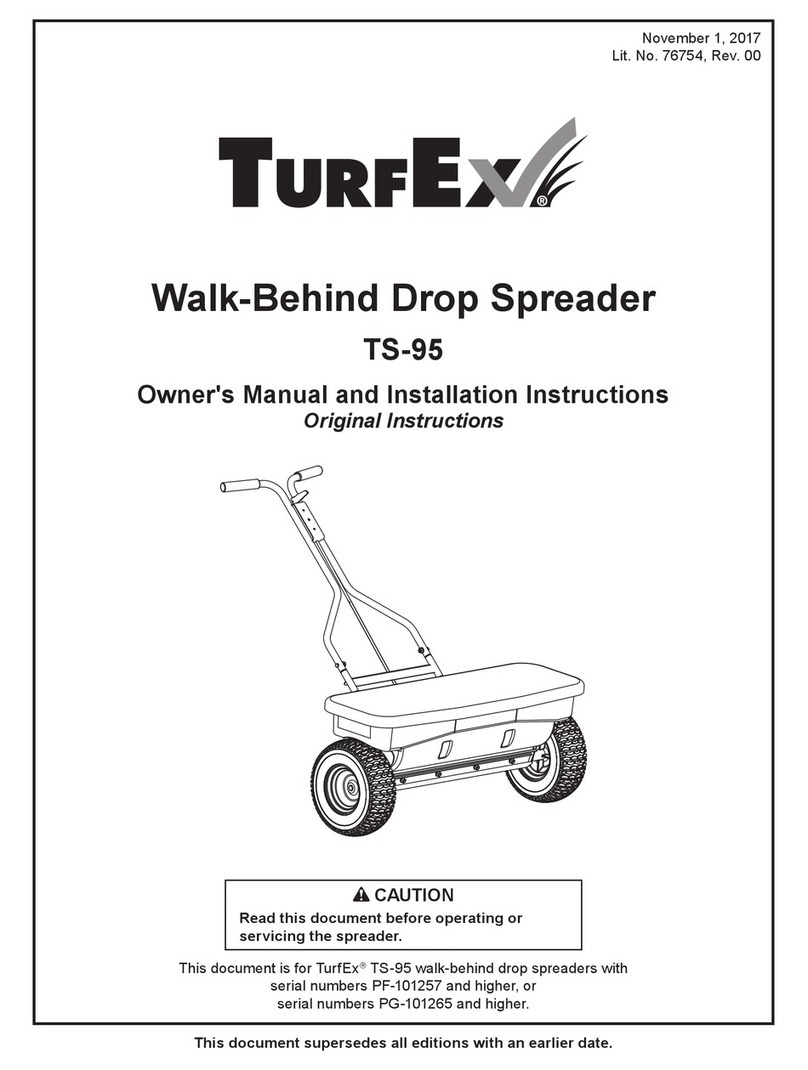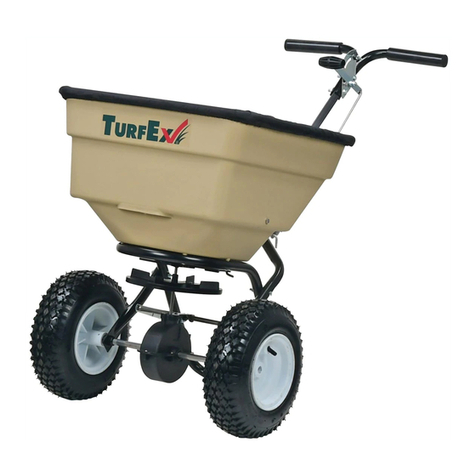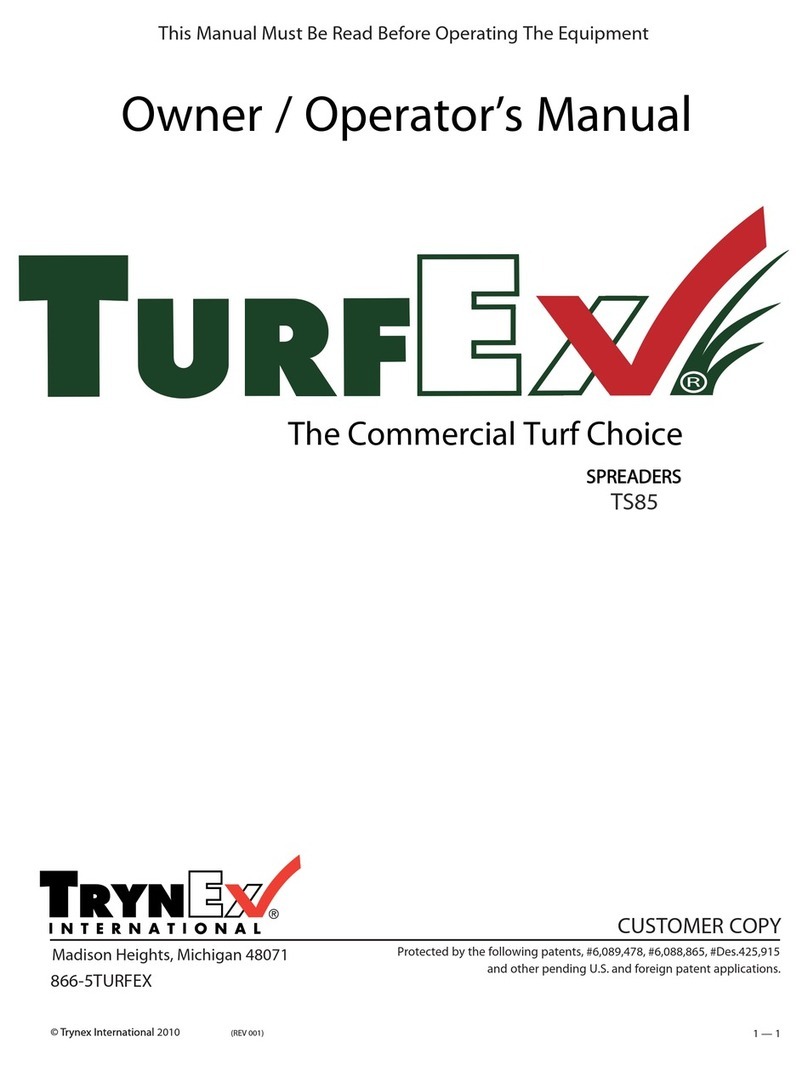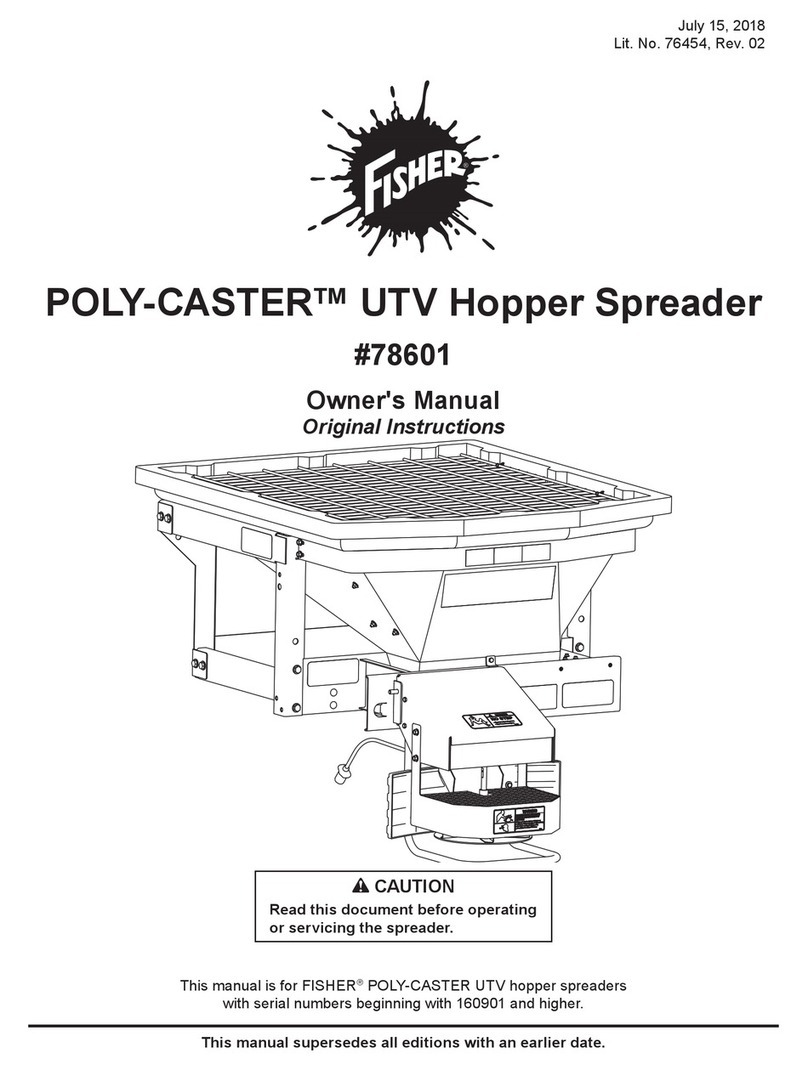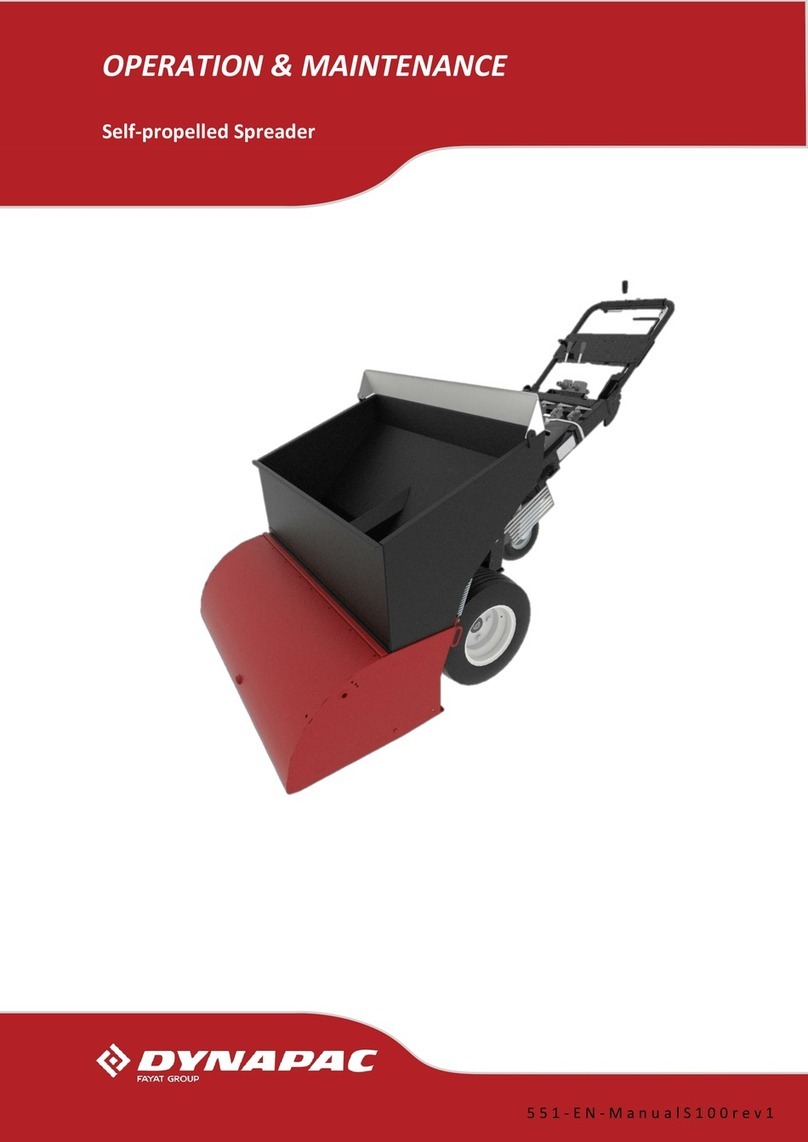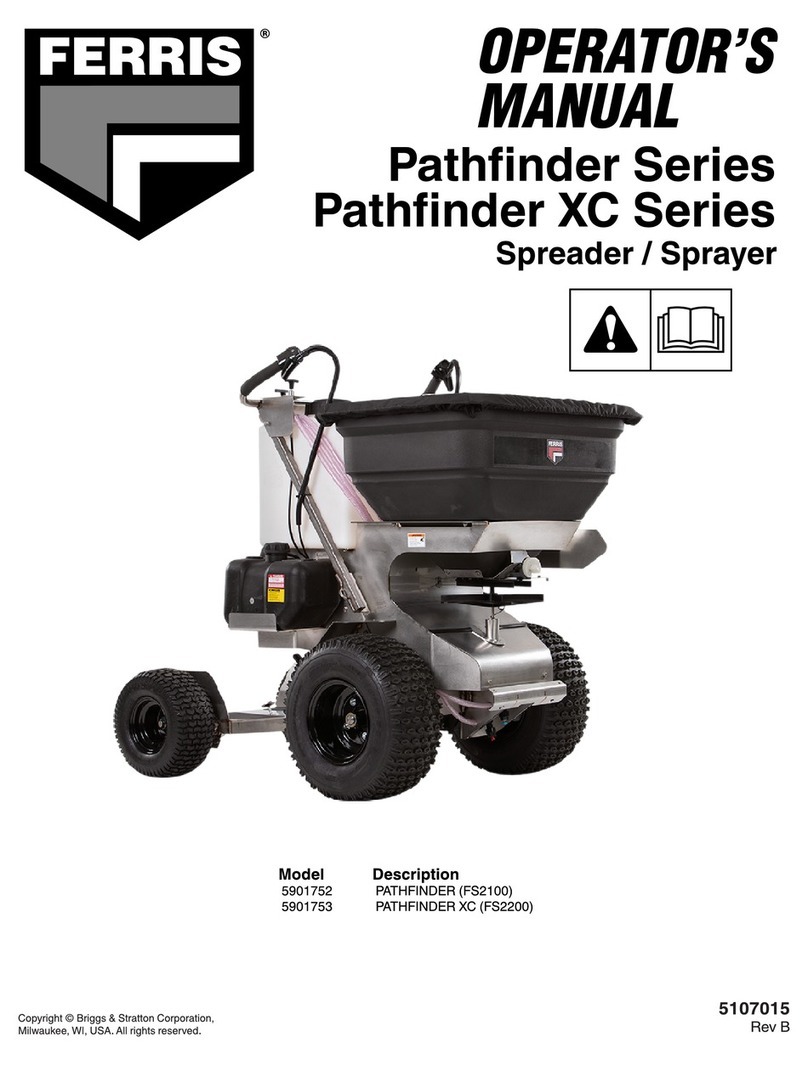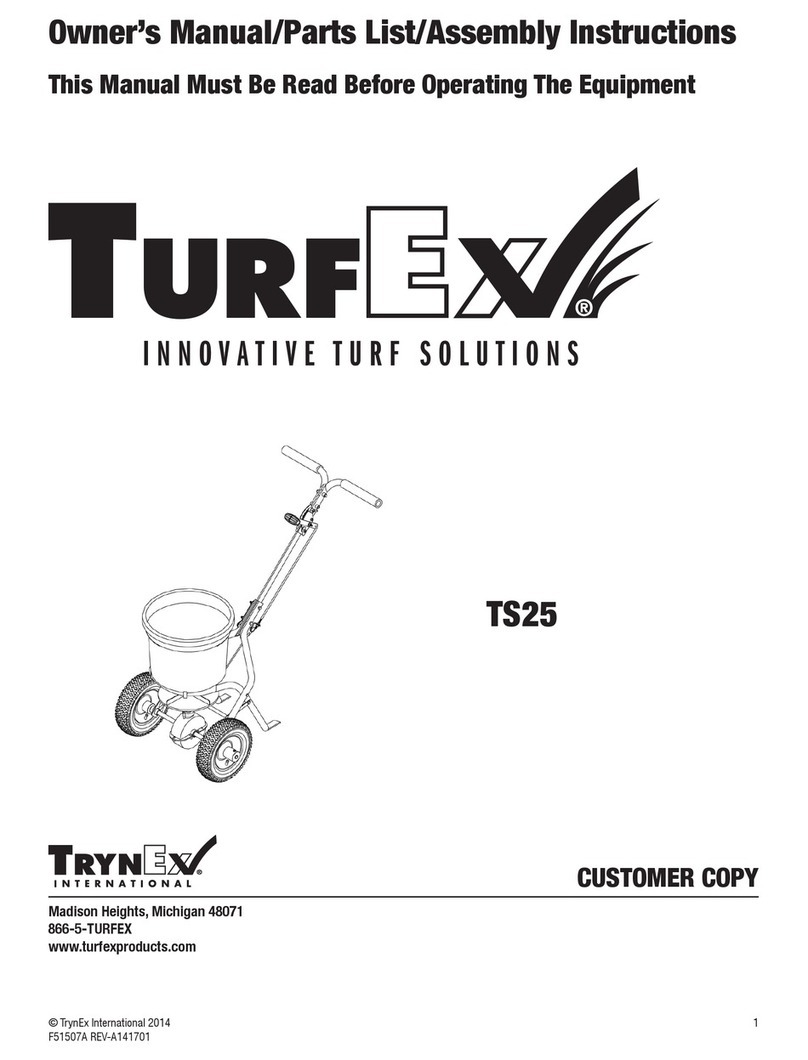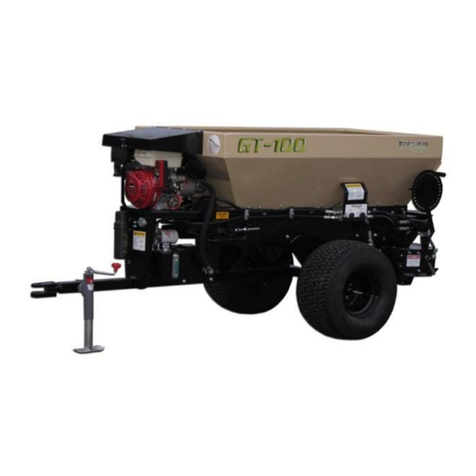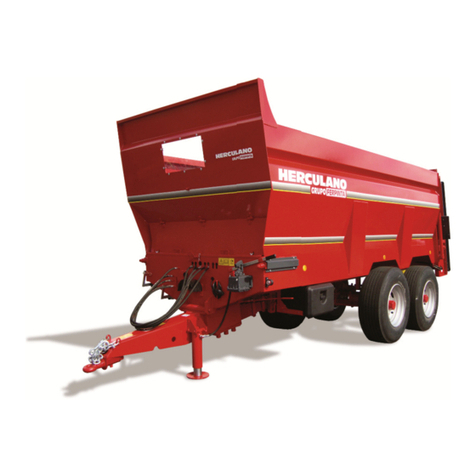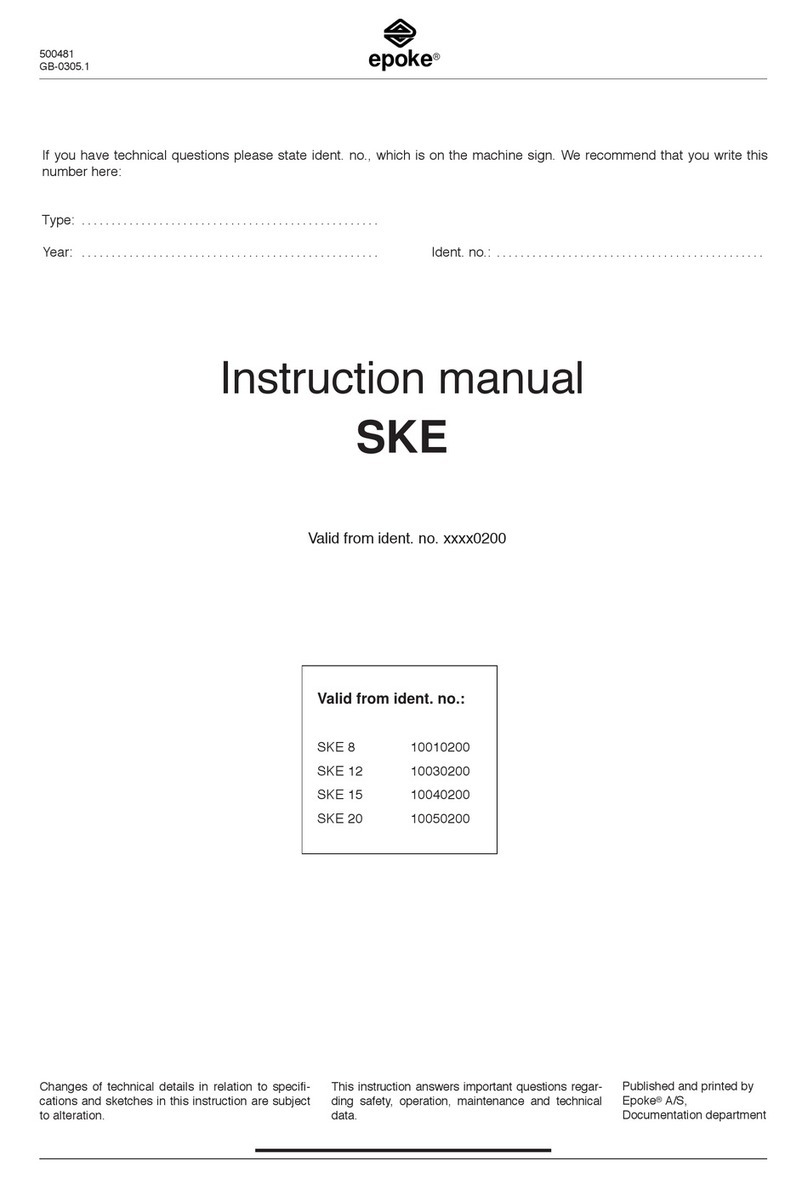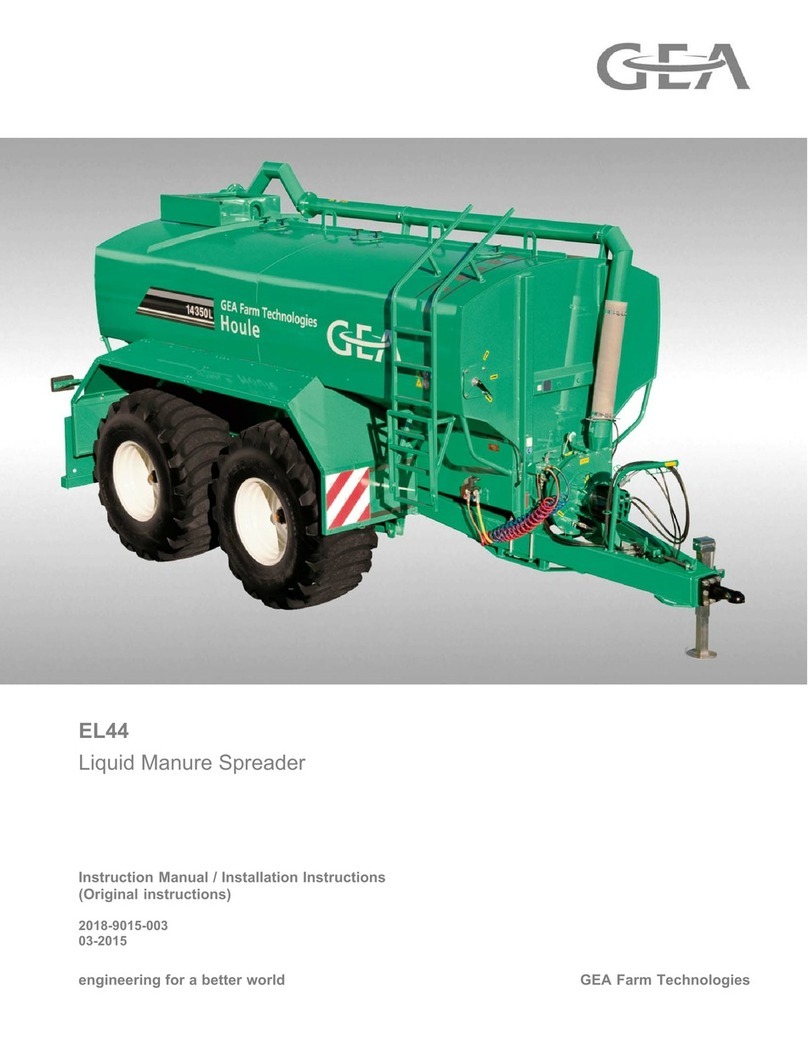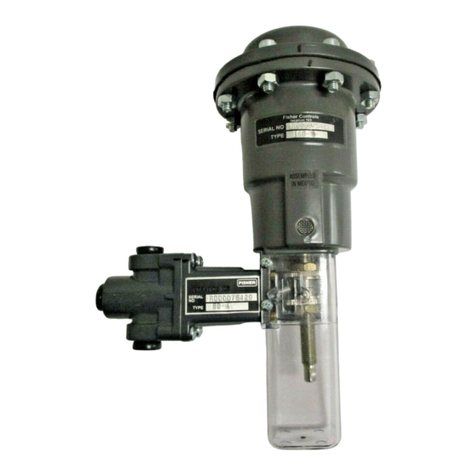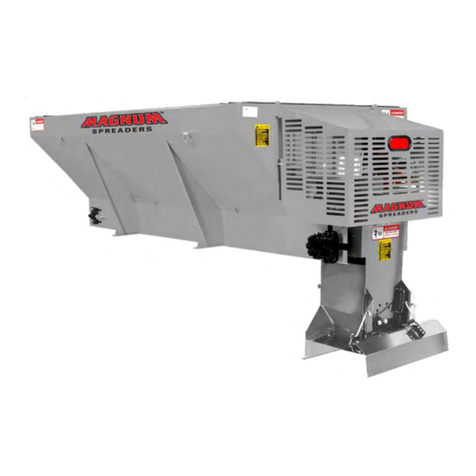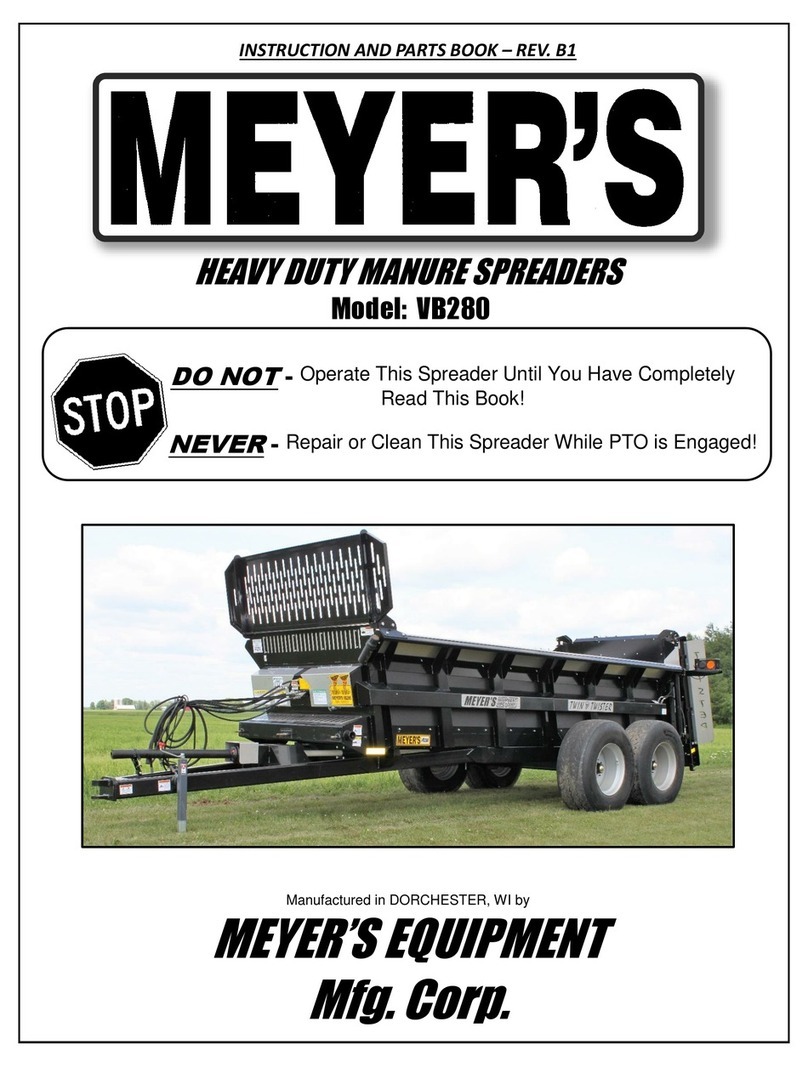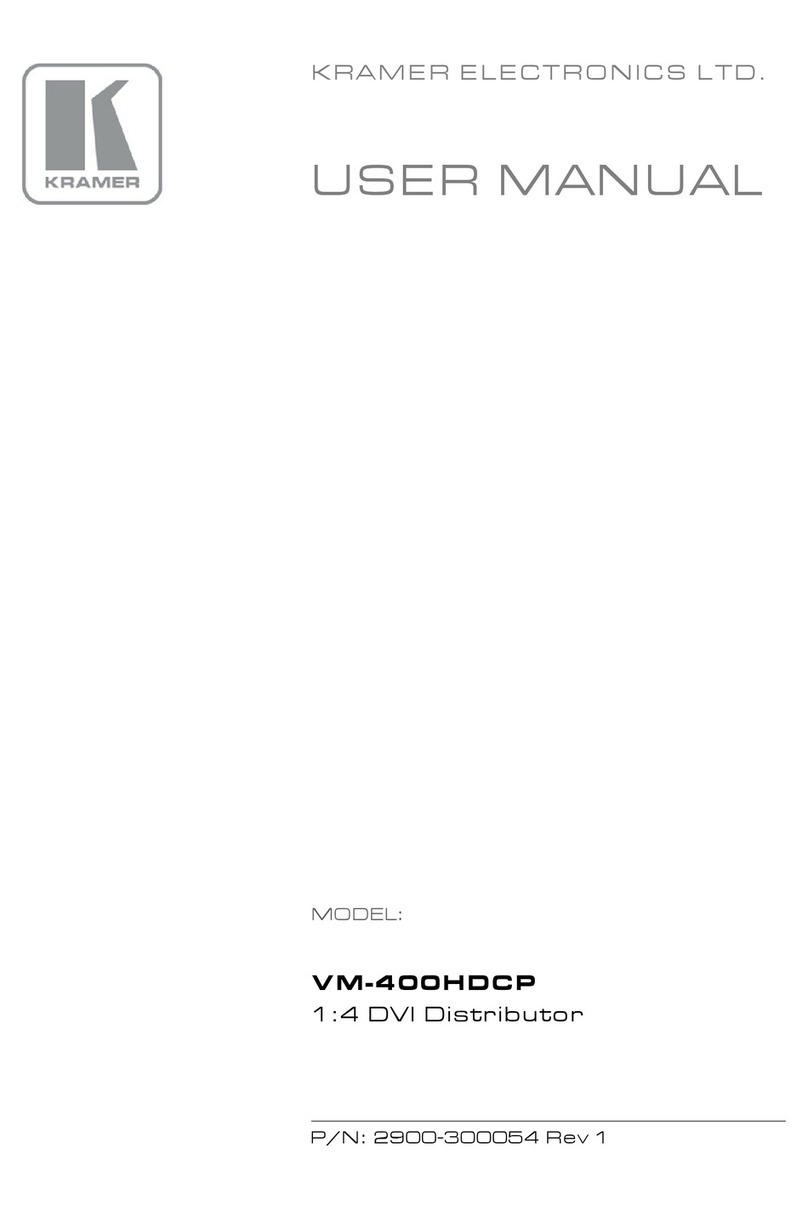
Lit. No. 75371, Rev. 01 7 October 1, 2018
CAUTION
Disconnect electric and/or hydraulic power
and tag out if required before servicing or
performing maintenance.
CAUTION
DO NOT leave unused material in
hopper. Material can freeze or solidify,
causing unit to not work properly.
Empty and clean after each use.
NOTE: Lubricate grease ¿ttings after each use.
Use a good quality multipurpose grease.
PERSONAL SAFETY
• Remove ignition key and put the vehicle in PARK
or in gear to prevent others from starting the
vehicle during installation or service.
• Wear only snug-¿tting clothing while working on
your vehicle or spreader.
• Do not wear jewelry or a necktie, and secure long
hair.
• Wear safety goggles to protect your eyes from
battery acid, gasoline, dirt, and dust.
• Avoid touching hot surfaces such as the engine,
radiator, hoses, and exhaust pipes.
• Always have a ¿re extinguisher rated BC handy,
for Àammable liquids and electrical ¿res.
SAFETY
SAFETY PRECAUTIONS
Improper installation and operation could cause
personal injury and/or equipment and property
damage. Read and understand labels and this
Owner's Manual before installing, operating, or making
adjustments.
WARNING
• Driver to keep bystanders minimum of
25 feet away from operating spreader.
• Before working with the spreader, secure all
loose-¿tting clothing and unrestrained hair.
• Before operating the spreader, verify that all
safety guards are in place.
• Before servicing the spreader, wait for
auger and spinner to stop.
• Do not climb into or ride on spreader.
WARNING
Overloading could result in an
accident or damage. Do not exceed
GVWR or GAWR ratings as found on
the driver-side door cornerpost of
the vehicle. See Loading section to determine
maximum volumes of spreading material.
CAUTION
If rear directional, CHMSL light, or brake
stoplights are obstructed by the spreader,
the lights shall be relocated, or auxiliary
directional or brake stoplights shall be
installed.
CAUTION
During the hopper spreader installation
we recommend the addition of an OSHA
compliant Backup Alarm. This alarm is
required for OSHA governed employers.
CAUTION
• Do not operate a spreader in need of
maintenance.
• Before operating the spreader, reassemble
any parts or hardware removed for cleaning
or adjusting.
• Before operating the spreader, remove
materials such as cleaning rags, brushes,
and hand tools from the spreader.
• While operating the spreader, use auxiliary
warning lights, except when prohibited by law.
• Tighten all fasteners according to the
Torque Chart. Refer to Torque Chart for the
recommended torque values.
WARNING
Vehicles <10,000 lb GVWR: Obstructing
the visibility from the vehicle's rear camera
could result in serious injury or damage. An
auxiliary camera system shall be installed
if the vehicle's rear camera is removed or
blocked.
